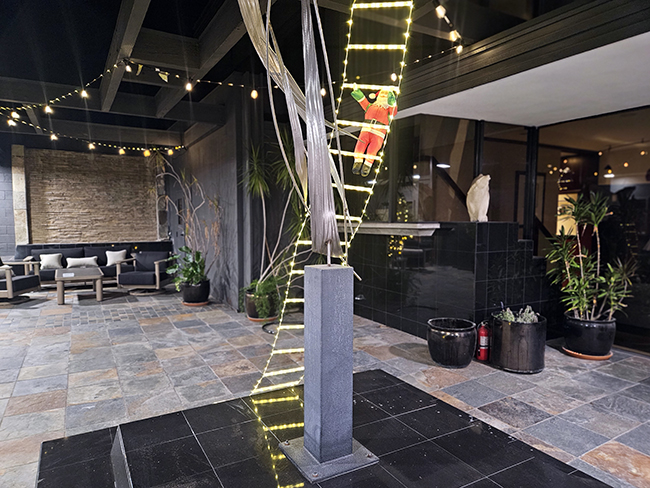Almanac: So what’s on the city books anyway?
From its humble beginnings, Claremont has utilized its ordinances as a measure to provide guidelines for residents and businesses. Without them, we’d likely see a very different city. The city’s first ordinance was passed in October of 1907. It should come as no surprise, Claremont’s Ordinance No. 1 scheduled the bonds and salaries of the city’s first officers. The clerk, marshal and recorder were required to sign bonds “conditioned for their faithful performance of their respective duties…in the penal sum of $500,” the document states. The city’s first treasurer, who was seemingly held to a higher standard, was ordered to secure $5,000 in bonds.
At that time, the city clerk earned just $50 a year. The marshall’s annual salary was $25. The treasurer worked on commission, taking one percent of any fees collected. And, after settling with the city clerk, the recorder was permitted to keep fees gathered for criminal prosecutions. No Cal-PERS, no auto allowance, no health benefits. It was certainly a very different way of running city business.
The city went ordinance-crazy through the 1970s, with many of our laws set during this time. The overnight parking rule, zoning, speed limits and a variety of building fees were set during these years of tremendous growth in Claremont. Councilmembers in the ‘70s approved, on average, 40 to 50 ordinances each year. By comparison, our current council adopted just 10 ordinances in 2013.
A number of the city’s current laws were written years ago—curfew for minors, dog licensing and downtown parking restrictions were all set by our early city leaders. One of note, Ordinance 128, outlawed public expectorating. This raises the question, if the ordinance was never removed or amended, could a current resident be fined $10 for spitting in public? “Theoretically, that would be correct,” current City Clerk Shelley Desautels confirmed. That would be a $218 fine today. Not a bad law, I’d say.
We hope you enjoy this look at the books.
—Kathryn Dunn
May 1914—Ordinance 103
“It is hereby declared unlawful for any person to skate, ride or to be propelled upon a roller skate or skates on or along any sidewalk in the City of Claremont within the following boundaries: the south property line of First Street and the north property line of Second Street, and the north and south alley between Harvard and College Avenues, and the north and south alley between Yale Avenue and Alexander Avenue (now Indian Hill). Punishment shall be a fine not exceeding $25, or by imprisonment for a period not exceeding ten days, or both.”
A $25 fine not so much? In today’s dollars, it would be equivalent to $582. Apparently, skateboarding really was a crime.
Who would have foreseen that Claremont would be gaining the addition of a skateboard shop? One hundred years after Ordinace 103, Monrovia-based Stix Ride Shop will be joining the Claremont Village. And it only took a century. This is not to say there won’t be restrictions on skating in the Village and perhaps attendant fines, but there is the Claremont Skate Park conveniently located on Indian Hill just above Claremont High School, open from 6 a.m. to 10 p.m. daily.
April 1917—Ordinance 131
“All loaves of bread made or procured for the purpose of sale, sold, offered or exposed for sale in the State of California, shall weigh, unwrapped, twelve hours after baking, sixteen ounces avoirdupois, except as follows: Bread may also be made in twenty-four ounce loaves, which weight shall be known as a standard large loaf. All rolls shall be in units weighing from one to three ounces. A tolerance is hereby fixed on the standard small loaf of one ounce in excess, and a tolerance on the standard large loaf of one and one-half ounces in excess. There shall be no tolerance below these standard weights.”
These days, one can purchase a sourdough baguette from Walter’s, a large and handsome loaf of kalamata olive bread from Some Crust or standard pita bread from Saca’s, along with any other manner of bread of any weight, shape and size in our fair ‘Ville. Let us not forget our abundance of bagels, cupcakes, naan or tortillas—the city’s variety of bread products is as varied as it is delicious.
March 1923—Ordinance 154
“Every person, persons, or corporation owning or keeping a dog or dogs within the City of Claremont are hereby required to keep said dog or dogs muzzled, at all times unless actually confined in kennels or on leash or other places of safe keeping, or while being fed or watered, and the muzzle shall be of sufficient strength to insure [sic[ safety from biting. Anyone permitting dogs without a muzzle shall be deemed guilty of a misdemeanor, and upon conviction thereof shall be punished by a fine not exceeding One Hundred Dollars or by imprisonment not exceeding six months, or both.
So not just leashed, but muzzled? Times have certainly changed. Since 1996, Claremont has had its very own Pooch Park, located on College Avenue just below First Street. Here, every person or persons owning or keeping a dog may bring said dog to the Pooch Park and let them off leash, providing physical and social exercise for all manner of canines. And their people, too.
April 1946—Ordinance 333
“It shall be unlawful for any person to use or occupy any trailer or trailer coach for residence or living purposes within the City of Claremont.”
Lest you think removing the trailer wheels would exempt you from this, think again. The ordinance goes on to state, “a trailer or trailer coach shall not lose its identity as such by reason of the fact that its tires or wheels have been removed or that it has been permanently attached to the ground by means of underpinning or foundation.”
The fine for living in a trailer was $300 or three months in either the city or county jail(!).
Today, trailers and RVs should be stored at an off-site facility, however, home storage is permissible if the vehicle is secured behind a permanent fence and not visible from the street. You still can’t live in it, though.
April 1947—Ordinance 353
Ordinance 353 established a curfew, establishing that every person under 18 years who “loiters about the public streets, avenues, alleys, parks or public places with the City of Claremont between the hour of 10 o’clock p.m. and the time of sunrise of the following day when not accompanied by his parent or legal guardian having legal custody and control of such person, or spouse of such person, over twenty-one years of age, is guilty of a misdemeanor.”
The fine? $500 or six months’ imprisonment. Teens take heart: the curfew now starts at 10:30 p.m., so enjoy that extra half-hour.
January 1950—Ordinance 402
Ordinance 402 pledged “it is to be declared a nuisance, and it shall be unlawful for any person (firm or corporation), either as principal, agent or employee, to keep, or permit to be kept, at or upon any premises owned, controlled and operated by him in said City of Claremont, any chicken coop, yard, cow house, rabbit pen, stable, cellar, vault, drain, sump, pool, sewer, sink, cesspool or other enclosure in a foul, noxious or filthy condition.”
In case you were wondering, it was also a nuisance and deemed unlawful to slaughter, or cause to be, or permit to be, slaughtered any cattle, sheep, goats or hogs within the city.
Ordinance 408
The old El Camino packing house, located on the railroad tracks between Olive and Spring streets, was the impetus for Ordinance 408: that a Neil Jacobsen be granted a permit to operate a square dance pavilion for a period of six months. Clearly the city wanted to hedge its bets on a venture that would allow a capacity of 1000 square dancers at any one time. Mr. Jacobsen could operate this venture so long as “square and folk dancing only is allowed on said premises and the same is not used for ballroom dancing.”
A search of Claremont COURIER archives failed to yield any announcements or advertisements indicating Claremont becoming a mecca for those wishing to allemande and do-si-do, so perhaps Ordinance 408 quietly expired at the end of its six months.
December 1951—Ordinance 447
Ordinance 447 spoke of a “fad developing in Southern California by which mechanisms are inserted in the exhaust system of motor vehicles for the purpose of burning or exploding exhaust gases resulting in fire and safety hazards.” A convoluted description of hot rodding.
Twenty years later, in 1971, the city found there had been a recent and sudden increase in motor-driven vehicles, motorcycles and motor-driven cycles on unimproved parcels of private and public lands.
Teens and young adults in the 1970s took advantage of the newly-excavated orange groves and, before developers could get foundations laid for new housing tracts, they took to dirt biking in the open spaces in Claremont.
City leaders determined that the operation of such vehicles caused erosion of land, damaged wildlife and plant material, and generated excessive amounts of irritating dust, noise and noxious exhaust fumes.
December 1955—Ordinance 542
Carrying concealed weapons by unauthorized persons was addressed with this ordinance. The definition of a deadly or dangerous weapon includes, but is not limited to, “any dirk, bowie knife, stiletto, slung shot [sic], sand club, metallic knuckles, dagger, any knife with a blade three inches, or more, in length, any snap blade, spring blade or switch blade knife, regardless of the length of the blade, any ice pick or similar sharp stabbing tool, any straight edge razor or any razor blade fitted to a handle, any cutting, stabbing or bludgeoning weapon or device capable of inflicting grievous bodily harm, and firefarm, pistol or revolver other than one’s carried pursuant to a valid permit issued by the Chief of Police.”
So there.
—Robin Young










0 Comments